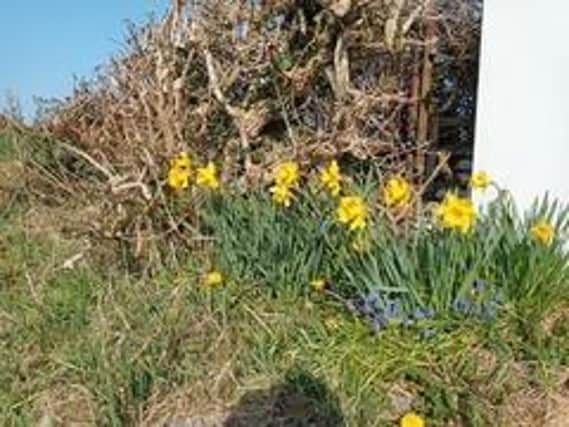The top 10 common spring plants that are toxic for your pets


Daffodils
Daffodils contain toxins that can be harmful to pets if ingested. The bulbs and flowers of daffodils contain lycorine and other alkaloids which can cause gastrointestinal distress, excessive salivation, vomiting, and even death if ingested in large quantities.
Tulips
Tulips contain a toxic substance called tulipalin A and B, which can cause digestive issues such as vomiting, diarrhoea, and abdominal pain in pets if ingested. In extreme cases, tulip poisoning can even lead to death.
Ivy
Advertisement
Hide AdAdvertisement
Hide AdIvy is dangerous to pets because it contains a toxic sap that can cause skin irritation, vomiting, and difficulty breathing in pets. It can also cause contact dermatitis, which is an allergic reaction to the sap. Additionally, the leaves of ivy can contain calcium oxalate crystals, which can cause an intense burning sensation and swelling if ingested.
Bluebells
Bluebells are poisonous to pets because they contain a toxic alkaloid called lycorine. This toxic alkaloid can cause vomiting, diarrhoea, excessive salivation, and even death in some cases if ingested. Pets may also experience difficulty breathing and weakness if they come in contact with the plant.
Yew
Yew trees are potentially dangerous to pets because they contain a toxic ingredient called taxine. If ingested, this chemical can cause vomiting, diarrhoea, lethargy, and even death in some cases. For this reason, it is important to keep pets away from yew trees, especially if they are small or more prone to chewing on plants.
Hyacinths
Hyacinths are a type of bulb plant that contain a compound called lycorine. This compound is a toxin that can be harmful to pets if ingested. It can cause vomiting, diarrhoea, excessive salivation, and even death if the pet ingests enough of it.
Calla Lily
Advertisement
Hide AdAdvertisement
Hide AdCalla lilies contain calcium oxalate crystals, which can cause irritation and burning to a pet's mouth, throat, and digestive tract if ingested. The irritation can lead to vomiting, drooling, difficulty swallowing, and even breathing difficulty.
Azaleas
Azaleas contain a toxin called grayanotoxin, which can be deadly to pets if ingested. This toxin affects the nervous system, causing vomiting, diarrhoea, increased salivation, and difficulty breathing. In severe cases, it can cause coma and death.
Snowdrops
Snowdrops contain a type of alkaloid called galantamine, which is toxic to pets if ingested in large amounts. Some animals may experience vomiting, diarrhoea, seizures, and other severe health issues if they eat large amounts of the plant.
Crocus
Crocus plants contain a toxin called colchicine that is toxic to pets if ingested. Ingesting even small amounts of the toxin can cause vomiting, diarrhoea, abdominal pain, lethargy, and even death in some pets.
Advertisement
Hide AdAdvertisement
Hide Ad*The list was compiled by Chris Ashton at The Sun Vegas (https://www.thesunvegas.co.uk/home).
He said: " Protect your pet and stay informed about your local spring plants - research what to look out for including the best areas when walking your pet free from hazardous shrubs and flowers. And remember if you are somewhere potentially dangerous, always keep your pet on a lead, so there’s still enjoyment from the great outdoors."